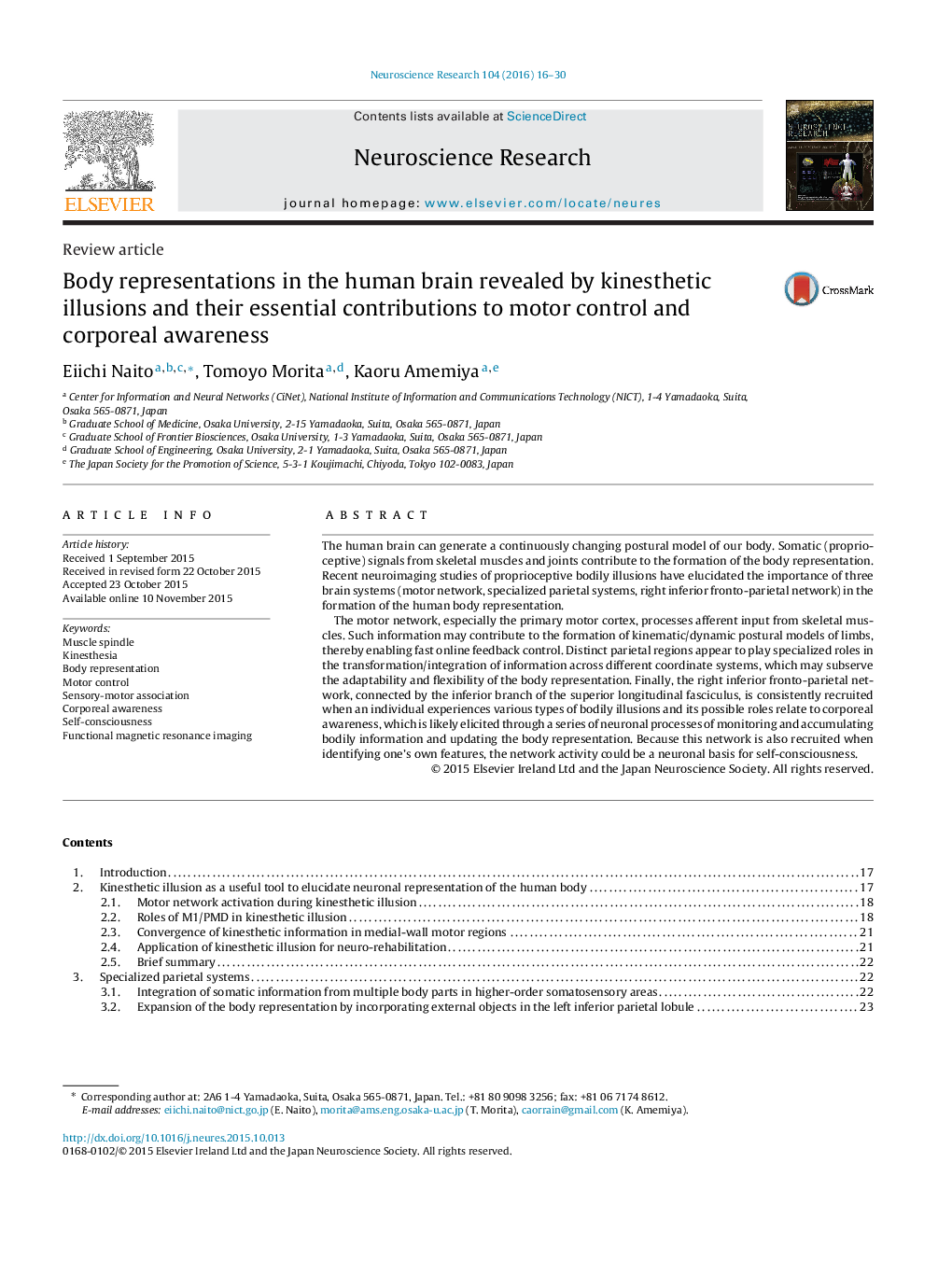| کد مقاله | کد نشریه | سال انتشار | مقاله انگلیسی | نسخه تمام متن |
|---|---|---|---|---|
| 6286065 | 1615279 | 2016 | 15 صفحه PDF | دانلود رایگان |
- Somatic signals from skeletal muscles and joints contribute formation of body schema.
- Proprioceptive bodily illusions have elucidated the importance of three brain systems.
- Motor network processes muscle afferents and forms a dynamic postural model of limbs.
- Specialized parietal systems integrate information across different coordinate system.
- Right inferior fronto-parietal SLF III network contributes corporeal self-awareness.
The human brain can generate a continuously changing postural model of our body. Somatic (proprioceptive) signals from skeletal muscles and joints contribute to the formation of the body representation. Recent neuroimaging studies of proprioceptive bodily illusions have elucidated the importance of three brain systems (motor network, specialized parietal systems, right inferior fronto-parietal network) in the formation of the human body representation.The motor network, especially the primary motor cortex, processes afferent input from skeletal muscles. Such information may contribute to the formation of kinematic/dynamic postural models of limbs, thereby enabling fast online feedback control. Distinct parietal regions appear to play specialized roles in the transformation/integration of information across different coordinate systems, which may subserve the adaptability and flexibility of the body representation. Finally, the right inferior fronto-parietal network, connected by the inferior branch of the superior longitudinal fasciculus, is consistently recruited when an individual experiences various types of bodily illusions and its possible roles relate to corporeal awareness, which is likely elicited through a series of neuronal processes of monitoring and accumulating bodily information and updating the body representation. Because this network is also recruited when identifying one's own features, the network activity could be a neuronal basis for self-consciousness.
Journal: Neuroscience Research - Volume 104, March 2016, Pages 16-30
